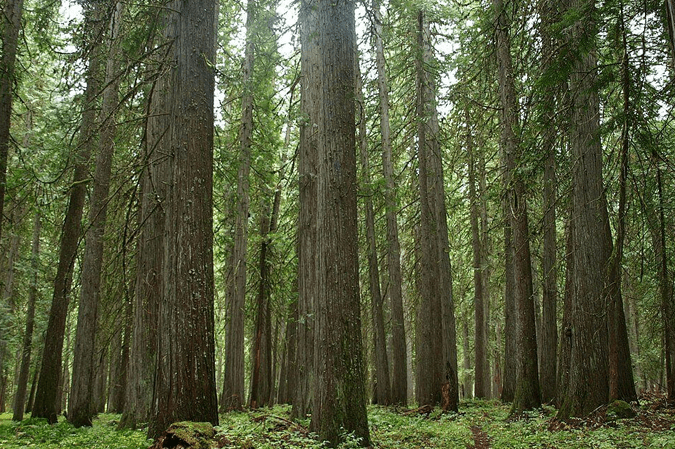Description
Hemlock is the common name for two different types of plants: Eastern Hemlock (Tsuga canadensis) and Poison Hemlock (Conium maculatum). The Eastern Hemlock is a large evergreen tree native to North America, commonly found in forests. Poison Hemlock, on the other hand, is a highly toxic biennial plant native to Europe and North Africa but is now widely spread across North America.
- Eastern Hemlock (Tsuga canadensis): This tree can reach heights of 60 to 70 feet, with some trees growing even taller. It has slender, drooping branches, and its bark is deeply furrowed and reddish-brown. The needles are short, flat, and soft to the touch, with a dark green top and a lighter underside.
- Poison Hemlock (Conium maculatum): This plant grows to a height of 6-10 feet and has hollow stems with purple spots. It bears clusters of small white flowers in umbrella-shaped clusters (umbels). The leaves are finely divided, feathery, and resemble those of a carrot.
Common Features
- Eastern Hemlock (Tsuga canadensis):
- Leaves: Short, flat needles, dark green on top, and lighter underneath.
- Bark: Reddish-brown, deeply furrowed.
- Cones: Small, about ¾ inch long, hanging from the tips of the branches.
- Growth Habit: Slow-growing, shade-tolerant, and long-lived.
- Poison Hemlock (Conium maculatum):
- Leaves: Lacy, finely divided, similar to carrot tops.
- Stems: Hollow with purple blotches.
- Flowers: Small, white, and clustered in umbrella-shaped formations.
- Toxicity: Extremely toxic, especially to humans and animals, if ingested.
Role in the Ecosystem
- Eastern Hemlock:
- Habitat: Provides essential habitat for a wide range of wildlife, including deer, birds, and small mammals.
- Soil Stabilization: The tree’s root system helps prevent soil erosion, particularly in hilly or mountainous areas.
- Microclimate Creation: Dense Hemlock stands create cool, moist microclimates that are crucial for certain plant and animal species, especially in the summer.
- Poison Hemlock:
- Invasive Species: Although it can spread rapidly and displace native vegetation, it offers minimal ecological benefits due to its toxicity.
- Impact on Wildlife: Generally avoided by wildlife due to its toxic nature. Ingesting even small amounts can be fatal to animals.
Importance
- Eastern Hemlock:
- Timber: Although not a primary timber species, Hemlock wood is used in construction, particularly for framing and pulpwood.
- Ecological Significance: The Eastern Hemlock is a keystone species in certain forest ecosystems, providing critical habitat and influencing the structure and composition of these forests.
- Conservation: Eastern Hemlock forests are under threat from the Hemlock Woolly Adelgid, an invasive insect that can decimate entire stands, making conservation efforts vital.
- Poison Hemlock:
- Historical Use: Historically, Poison Hemlock has been used as a method of execution, most famously for the philosopher Socrates.
- Control and Management: Due to its invasive nature and high toxicity, managing its spread is crucial in areas where it threatens native species or human activity.
Interesting Facts
- The Eastern Hemlock can live for over 800 years, making it one of the longest-living trees in North America.
- Poison Hemlock was the plant used to prepare the lethal potion that killed Socrates in ancient Greece.
- Despite its name, the Eastern Hemlock has no relation to the poisonous herb Hemlock; the name was given due to the similar scent of the crushed foliage.
Sources
- USDA Forest Service, “Eastern Hemlock.”
- University of California Agriculture and Natural Resources, “Poison Hemlock.”
- Pennsylvania State University, “Hemlock Woolly Adelgid and Eastern Hemlock.”
- Image Source: cdn.britannica.com



